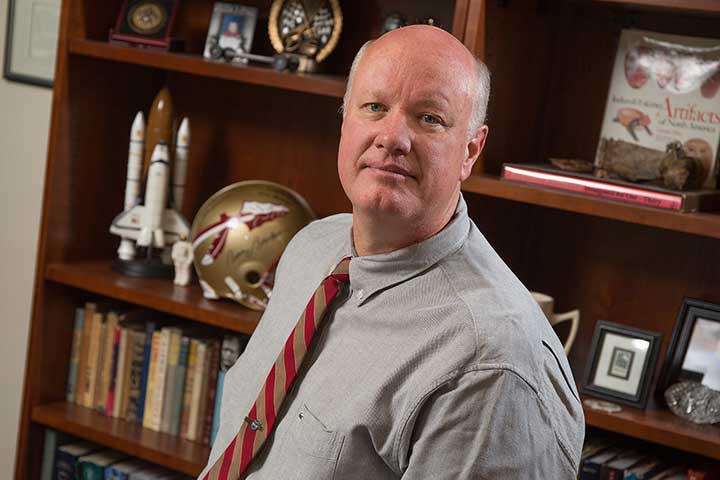
For astronauts soaring through the limitless expanse of deep space, cosmic rays pose a major problem. The powerful radiation that pulses just above Earth’s atmosphere can have devastating effects on human beings, imperiling any crewed mission beyond the safety of the planet’s magnetic field.
Now, Florida State University researcher Michael Delp is part of a new team working to surmount this critical obstacle to human exploration of space. As part of a $17.7 million NASA research initiative, he and a group of scientists from around the country are set to explore questions of astronaut health and performance during extended missions outside of low-Earth orbit.
Delp, the Betty M. Watts Professor and dean of the College of Human Sciences, will examine the apparent link between deep space radiation exposure and cardiovascular disease and evaluate countermeasures that could help mitigate the harm radiation inflicts on the cardiovascular system.
“My study is looking at the more relevant parts of the cardiovascular system — the heart and the brain — and investigating how this type of deep space radiation exposure will affect these areas in the long term,” Delp said. “We’re also planning to test interventions that can be used to offset or eliminate some of those radiation effects.”
As national space agencies and private spaceflight firms train their sights on targets far beyond Earth’s protective magnetic field — a lunar outpost and a crewed mission to Mars are two core NASA objectives — issues of prolonged radiation exposure have moved quickly to the fore. This is especially true as an emergent body of research continues to suggest a connection between deep-space ionizing radiation and an increased risk of long-term cardiovascular disease.
“The Earth is protected by the magnetosphere, the magnetic field around the planet, and almost all of the humans who have gone to space have stayed within the magnetosphere,” Delp said. “Space radiation outside the magnetosphere is a dangerous high-energy particle radiation. There’s nothing quite like it on Earth.”

The 24 Apollo astronauts are the only humans to have ever ever traveled beyond the magnetosphere, and past research published by Delp has shown that among those 24 astronauts, mortality due to cardiovascular disease was significantly more common than average.
While that sample size is too small to support definitive conclusions, Delp said the findings offer a “hint of a possibility” that even relatively low doses of deep space radiation could cause long-term cardiovascular harm.
For this study, Delp and his team will conduct a series of experiments at the Brookhaven National Laboratory in Long Island, New York — the only facility in the United States with the capacity to simulate radiation similar to what humans encounter in deep space. Using lab rats, Delp will also study weightlessness and the ways it might interact with radiation exposure to wreak lasting cardiovascular damage.
“Rather than just examining one factor or the other, we will combine the two in order to see if weightlessness and deep space radiation interact with each other to cause more harm than either one of them might do on their own,” Delp said.
With the International Space Station scheduled for decommission in 2024, space agencies around the world are shifting their focus — and their considerable resources — to lunar and interplanetary travel. Those changing priorities, along with the accelerated timelines of ambitious private spaceflight corporations like SpaceX and Blue Origin, means the sense of urgency surrounding space exploration is as acute as it’s been in decades.
That, said Delp, is why solving the problem of radiation exposure is so crucial.
“Everybody wants to be the first to get to Mars, and that’s what’s driving much of the renewed interest to get to deep space,” he said. “The problem is that our understanding of space radiation’s effect on the body is lagging way behind. These studies are designed to help fill that knowledge gap.”
NASA’s Human Research Program and Space Biology Program are funding this multiproject initiative. The research will contribute to NASA’s long-term plans for deep space exploration missions.




